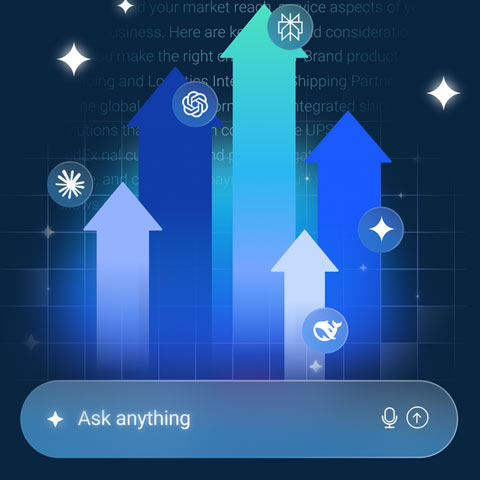Intervening in the Customer Journey

Rather than brands delivering a message and demanding that an audience pays attention, now marketers have to listen to the audience, stepping in at the right moment in an attempt to guide customers in a preferred direction, or respond with a positive solution to their needs at suitable touchpoints.
Marketers have to focus more on the experience than the goal, simply because your customers and clients demand control of how they get from point A to point B. To do that, marketers need to understand the customer journey, as well as find new ways to intervene appropriately, at the best times.
This eBook aims to answer some of the many questions you might have, including:
- What is the difference between a marketing campaign and a customer journey?
- How do we better understand customer behavior and map it?
- How do we know when to intervene in a customer journey?
- How do we measure the impact this intervention has?
Get the downloadBelow is an excerpt of "Intervening in the Customer Journey". To get your free download, and unlimited access to the whole of bizibl.com, simply log in or join free. |

|
What is a campaign?
The aim of a marketing campaign is to promote a product, a service or an idea through different forms of media, including TV, media, radio, print and digital platforms. A campaign can have many different goals, such as improving your brand’s image and online visibility, introducing a new product or increasing the sales of an existing one, or encouraging more customers to your outlet or website.
Ideally, a good campaign will achieve several of the aforementioned but all, ultimately, are about reaching out to customers in some way. Typically, a campaign has a fixed audience, one that targets a particular subset of your customer base with a specific message. The nature of this audience will likely define the media, the channel that marketers will use and will shape how much the campaign costs.
Most campaigns will have a start and an end date, beginning when the first outbound communication goes out and end on the last date a message is sent, or the last date when responses can be attributed to the campaign. Each of these responses bring with them a value, which will build incrementally over the campaign’s lifetime.
While campaigns can be multi-phase, multi-wave or even multi-channel, as well as handle multiple interactions, these interactions ultimately boil down to a single welcome, acquisition or reactivation objective. Campaigns focus on the destination and the responses are binary – customers either receive and act upon the message, or they don’t.
Campaigns are linear, journeys are not. Even when you factor in multi-channel, multi-wave and multi-step facets and tactics, it’s still linear by design.
Jim Kelly, BlueVenn Principal Consultant.
What is a customer journey?
Rather than the end goal or a destination, a customer journey instead concentrates on the voyage that the customer takes. The role that marketers have here is to identify, shape and control the various interaction and experiences a customer is exposed to while on this voyage.
Unlike a campaign, a customer journey does not have to have a start or an end date. Instead, it is something that runs perpetually, monitoring customer attributes and behaviors to ascertain who should enter and who should exit the journey.
Another very significant difference is that the customer – not the marketer – decides when (and at what point) they choose to enter into the journey. Yes, marketers can incentivize them to start the journey but it is ultimately their own decision. This makes a journey’s audience fluid and inclusive, rather than fixed and exclusive like a campaign.
Want more like this?
Want more like this?
Insight delivered to your inbox
Keep up to date with our free email. Hand picked whitepapers and posts from our blog, as well as exclusive videos and webinar invitations keep our Users one step ahead.
By clicking 'SIGN UP', you agree to our Terms of Use and Privacy Policy


By clicking 'SIGN UP', you agree to our Terms of Use and Privacy Policy
Traditionally, marketing messages are tailored for single, or multiple channels. With a customer journey the approach is omnichannel – the channel is irrelevant and the conversation can continue through any one of them at any time.
For example, a customer might reply to one of your emails through social media, or call you on the phone after receiving a direct mail piece. The customer is choosing the most appropriate channel for what they personally are trying to achieve.
Essentially, the focus is not on the channel as the source of the conversation, but a method to continue or influence the conversation itself. After all, customers do not think about channels in the same way marketers do. They think in terms of contact and, if anything, often assume that all channels of a business are seamlessly linked already.
Understanding the Customer Journey
The most popular way to define a customer journey articulately is with a customer journey map: a visual framework that tells the ‘story’ of a customer experience, from the initial point of interaction through a series of additional interactions with your brand, until the customer leaves the journey through a decisive outcome.
A customer journey needs to be created from the perspective of the customer. While this might sound obvious, it can be very easy for marketers to approach a map with their own idealized view. However, if you want to visualize a valid experience then you need think about what the customers in your world are doing and why they are doing it.
To do this, you need to take into account things that are out of your control. Much as you would like to assume your brand is singly responsible for a customer’s purchase, third parties like friends and colleagues, ancillary services, social media and unpaid media can influence their decisions, so they will need to be factored in to your map, too.
You need to fully understand the customer experience before you can identify how to get involved – to teach your organization more about your customers, their experience and their motivation. A customer journey map offers a concise and neat representation of a customer journey that every member of a team in an organization can understand and relate to.
Jim Kelly, BlueVenn Principal Consultant
Creating a customer journey map
There are no set rules for creating a customer journey map. It can be an infographic, a Visio diagram, a pen or paper drawing or a wall covered in sticky notes. Whichever route you choose to take, the principals are the same whatever your business vertical.
The important thing to do is to put yourself in the customer’s mind-set and think about the experience you are delivering to them, and how are they feeling when they interact with your channels, touchpoints and content.
Remember, while one customer might begin their journey with your website, another might enter through an email link. Entry points can differ for different customer personas, and each one needs mapping. While marketers can prompt them with offers or great content, it is the customer who instigates the journey.
Before building the framework for a customer journey map, the first and arguably most important step is to base it on fact rather than fiction, analyzing real-world data rather than making assumptions. Asking customers their needs, purchasing habits and frustrations (such as through surveys and feedback forms), as well as mining your own behavioral customer data, will enable you to identify who your customers are, what motivates them and which path they should follow. This combination of research, website analytics, segmentation, and personas will enable you to create appropriate journeys.
1. List the stakeholders.
As a customer journey will involve several areas of your organization, it is important to get all relevant departments involved in its creation. A collaborative effort will get everyone on the same page, as well as reveal touchpoints, key interactions and potential areas of friction. For example, it is no good dropping calls into a call center unless the call operatives know and understand the journey points, or their role in the customer journey.
2. Establish customer affinity
Think about how a customer is personally feeling towards the experience of your brand at different points of their journey, rather than the brand itself. This can add clarity and teach a reader more about the customer experience. This can be subjective, but it is vital that you are honest. Mapping customer affinity shows how the customer’s mood improves or worsens at different stages, such as liking the products you have recommended, or completing a transaction in a satisfying way. Add contextual notes that can explain what the customer is doing and how they are engaging, but remember – not all customers are the same, and all will have different motivations.
3. Admit what is out of your control
You will not be able to influence everything in your customer’s journey. A customer’s experience of an airport, for example, can be affected by car parking costs, availability of taxis, their meals, baggage handling and much more. While third parties handle all of these, it can affect a customer’s affinity with the airport.
4. Break journeys down into stages
Although you can map the entire experience, it is better breaking it down into more focused journeys, such as purchasing or complaints. You will find that journeys often overlap, and you will be more prepared to understand the interactions between individual journeys.
Want more like this?
Want more like this?
Insight delivered to your inbox
Keep up to date with our free email. Hand picked whitepapers and posts from our blog, as well as exclusive videos and webinar invitations keep our Users one step ahead.
By clicking 'SIGN UP', you agree to our Terms of Use and Privacy Policy


By clicking 'SIGN UP', you agree to our Terms of Use and Privacy Policy
Testing the customer journey
With a journey map providing a holistic visualization of how customers engage with your brand, marketers can begin to look at the different moments in the customer life cycle, along with opportunities for improving and optimizing it. In most instances, the journey can be broken down into the following stages: Discovery, Research, Conversion and Post-Sale.
Discovery
All businesses want to make a great first impression on visitors and you should analyze and test the initial point of contact. For example, how does the organic search experience work for customers – how does your brand appear in search results and will the landing page they are sent to explain your product or services clearly? Don’t forget social media. What does the way you present yourself on social networks say about your company, and does it match the same message and tone you convey elsewhere?
Research
Visitors don’t only want to know that your product or service will meet their needs; they want to know that they can trust your company before making a purchase. How does your company compare to your competitors when explaining their offerings? Are they offered support and how efficiently and appropriately have they responded? Could any one of those interactions see a customer leaving their journey?
Conversion
It is vital to ensure customers do not encounter any friction when trying to convert. Here you can analyze bounce rates and time spent on page – if customers are leaving quickly or lingering for too long then it could be a sign of something amiss. Examine the purchasing process (on all devices) for the user experience.
Post Sale
Once you have made a customer, you want to keep them coming back. Think about order confirmation and other forms of post-sale engagement. Does it make them feel good about their purchase and could you encourage them back to spend more? It can also provide a good opportunity for feedback to establish how they rated your service, and encourage them to recommend your services to others.
The best customer experiences are when good experiences are delivered well, and the bad experiences have been handled well. It is, after all, easier to improve a bad experience than one that is already good.”
Jim Kelly, BlueVenn Principal Consultant.
Intervening in the customer journey
Admittedly, the word ‘intervention’ is one that comes with strong connotations, not all of them positive. It can suggest interference or strong action. In this instance, however, we interpret the word to mean: “Becoming involved in a difficult situation to prevent it from getting worse, preferably improving it.”
Revealing these ‘pain points’ can identify areas of frustration for customers that negatively affect their experience. Examples can include everything from convoluted registration forms and hidden postage costs, to a disjointed experience when the customer moves between devices or channels.
Often, the biggest impact can be made when you intervene in a customer journey by getting involved in these negative experiences, and turning them into positive ones. While marketers can make a good experience even better, changing the sentiment of a negative experience should be the first port of call
Use personalization
Personalization tactics offer very powerful engagement opportunities and can take the form of product recommendations to spur impulse purchases or landing pages personalized with bespoke offers. Sending a list of further recommended purchases in a post-sale order confirmation email, if effective, could bring customers right back to the start of a new journey.
Learn from your mistakes
Are your personalized products not hitting the spot? Offering your customers the opportunity to refine what they are shown and remove irrelevant suggestions will not only help a negative moment become more positive, it will provide you with more data about your customer for more targeted recommendations in future.
Use real-time tactics
Did a customer abandon their shopping cart without checking out? A triggered email asking them if they want to recover it could encourage them back into the journey. Are customers spending a long time on your home page or help page? A live chat option can be used to assist them, and provide one-to-one engagement.
Offer a seamless service
Could high delivery costs discourage customers from making a purchase? Offering a click and collect service, or an in-store stock checker presents options that put the customer in control and demonstrate good customer service. Do customers need to make an account before they can buy something from you? Offering a one-click option that uses an existing social profile both streamlines the experience, and helps you develop a deeper understanding of your customers.
Intelligently intervening in the customer journey is not about increasing open rate, reducing attrition or increasing the average basket value. It is about fundamentally improving the customer experience, making them more loyal, more likely to purchase, and improving the most powerful marketing channel – the voice of the customer.
Jim Kelly, BlueVenn Principal Consultant
Want more like this?
Want more like this?
Insight delivered to your inbox
Keep up to date with our free email. Hand picked whitepapers and posts from our blog, as well as exclusive videos and webinar invitations keep our Users one step ahead.
By clicking 'SIGN UP', you agree to our Terms of Use and Privacy Policy


By clicking 'SIGN UP', you agree to our Terms of Use and Privacy Policy
Appropriate intervention
When is the best time to intervene in the customer journey and what is the best course of action? You may want to improve product discovery, push them towards a particular thing (or group of things). As we pointed out earlier, going out of your way to delight a customer isn’t nearly as effective at building loyalty as reducing their effort to solve a problem, or make a purchase.
Identify negative experiences
These are the points you should go after first, and the best place where you can get involved. Not only should they be easy to spot, they can have a big effect on the customer experience. At the same time, there needs to be acceptance that some things you cannot change.
Think in conversation, not channels
When marketers become attached to a particular channel, there is often a drive to force conversations to take place there more often – perhaps too often. Instead, engage customers in a real conversation by expanding your options. Use real-time options wherever you can
Empathize, don’t emphasize
Marketers need to appeal to the customer’s feelings, rather than reinforcing the negative problem. Don’t remind them about what they already know to be true. Think about how you would engage with a customer if you were talking to them face-to-face.
Develop measurable intervention
Knowing that you have improved retention by 10% is great, but knowing where this happens and how it is valuable allows you improve the customer experience iteratively.
Don’t use too much personalization
Measuring impact
Key to adding value across the experience is knowing how and where you’ve effectively intervened. If you can’t measure the intervention monetarily, use a metric approach. For example, a lead nurturing principle like that used by many B2B companies: if a customer does ‘X’, they earn 10 points. If they do ‘Y’, they gain 50 points. If they do ‘Z’ they lose 20 points, and so on. It’s another way of measuring the impact and can sometimes be better than a pure revenue based measurement.
When moving to a customer analytics-based approach to manage your customer relationships, here are how to monitor measure that impact across the board:
Date stamping every step of the journey
Like a campaign history entry when a customer is sent a communication with a traditional campaign. In this case, it’s a holistic monitoring program. Providing you have the right tools in place, you should be tagging every step. This will help you identify whether sales leads are stagnating at a certain stage, measure how many qualified leads you have created, and ensure a sales team follows up in a timely basis.
Vary your metrics
Don’t feel that you have to look at just money as a way to measure impact. Other metrics, like acquisition costs or customer lifetime value can also help demonstrate marketing effectiveness
Use control groups sparingly
These are very important as a way to get a benchmark for campaign performance but don’t use them in the middle of a customer journey as it will break the experience and will create a negative experience.
Conclusion
Savvy customers have a world of choice at the fingertips, which means providing them with a positive experience couldn’t be more important. Visualizing the numerous routes that any one customer might take provides a deeper level of understanding of what motivates and affects customers on their voyage, as well as provide organizations with a holistic view of their own offerings, that everyone in the company can comprehend.
By identifying the various journey touchpoints and correlating key decisions with emotions, organizations can hone in on operational inefficiencies and friction points, break down organizational silos and recognize opportunities for improvement. As marketers, knowing the optimal moments to step in and what action to take will help improve satisfaction, foster loyalty, reduce churn and increase revenue and sales.
But it is only with intelligent intervention that you can truly instigate change and start to transform negative experiences into positive ones, showing consideration for their emotions and expectations.
Want more like this?
Want more like this?
Insight delivered to your inbox
Keep up to date with our free email. Hand picked whitepapers and posts from our blog, as well as exclusive videos and webinar invitations keep our Users one step ahead.
By clicking 'SIGN UP', you agree to our Terms of Use and Privacy Policy


By clicking 'SIGN UP', you agree to our Terms of Use and Privacy Policy









